One-hot Encoding Concepts & Python Examples
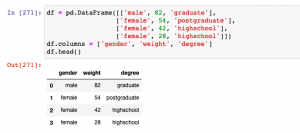
Have you ever encountered categorical variables in your data analysis or machine learning projects? These variables represent discrete qualities or characteristics, such as colors, genders, or types of products. While numerical variables can be directly used as inputs for machine learning algorithms, categorical variables require a different approach. One common technique used to convert categorical variables into a numerical representation is called one-hot encoding, also known as dummy encoding. When working with machine learning algorithms, categorical variables need to be transformed into a numerical representation to be effectively used as inputs. This is where one-hot encoding comes to rescue. In this post, you will learn about One-hot Encoding concepts and …
Differences: Azure OpenAI vs OpenAI – Examples
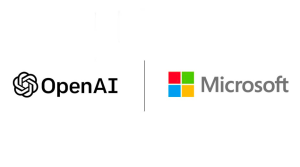
As the field of AI continues to evolve, the collaboration between Azure and OpenAI has brought forth a powerful combination of generative AI capabilities and enterprise-grade security. In this blog post, we will explore the differences between Azure OpenAI and OpenAI, with a focus on the benefits of Azure OpenAI in terms of security and model compatibility. What’s Azure, OpenAI & Azure OpenAI? Azure is Microsoft’s cloud computing platform that provides a comprehensive suite of services, tools, and infrastructure for building, deploying, and managing applications and services. It offers a wide range of capabilities, including virtual machines, storage solutions, databases, AI services, and more. OpenAI is a leading artificial intelligence …
What & When: List, Tuple & Set in Python – Examples
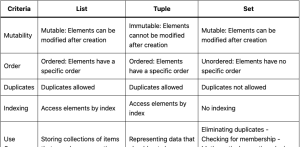
When working with Python programming, data structures play a crucial role in organizing and manipulating data efficiently. Among several data structures available, lists, tuples, and sets are three fundamental ones that every Python programmer/developer should understand. Lists, tuples, and sets are unique in terms of their properties and functionality, making them most appropriate for different scenarios. Not only are these data structures most frequently used in everyday programming tasks, but they are also frequently asked about in interviews with data analysts and data scientists. Therefore, grasping the concepts of lists, tuples, and sets becomes essential. In this blog, we will delve deeper into the specifics of lists, tuples, and sets, …
BI Analyst Career Path / Roadmap
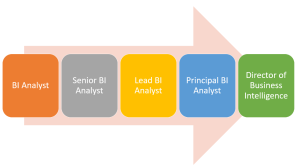
Are you interested in a career that combines data analysis, technology, and business strategy? Look no further than the role of a Business Intelligence (BI) Analyst. In this blog post, we will explore the career path/career roadmap of a BI Analyst, highlighting the various job titles, and discussing the skills and responsibilities associated with this in-demand profession. What is Business Intelligence? Business Intelligence (BI) refers to the process of collecting, analyzing, and interpreting data to gain valuable insights that drive informed business decisions. It is an umbrella term that encompasses the tools, methodologies, and processes used to transform raw data into meaningful information and actionable insights. It involves the collection, …
Ridge Regression Concepts & Python example
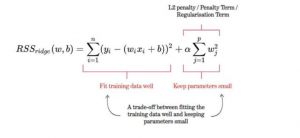
Ridge regression is a type of linear regression that penalizes ridge coefficients. This technique can be used to reduce the effects of multicollinearity in ridge regression, which may result from high correlations among predictors or between predictors and independent variables. In this tutorial, we will explain ridge regression with a Python example. What is Ridge Regression? Ridge regression is a powerful technique in machine learning that addresses the issue of overfitting in linear models. In linear regression, we aim to model the relationship between a response variable and one or more predictor variables. However, when there are multiple variables that are highly correlated, the model can become too complex and …
Microsoft Designer: Transforming Design with AI

Are you looking for a hassle-free and smart way to make impressive designs without any graphic design expertise? Then Microsoft’s newly launched tool, Microsoft Designer, may just be the answer. The realm of digital design welcomes a new entrant that promises to revolutionize the way we create – Microsoft’s latest offering, Microsoft Designer. Drawing parallels with the popular tool Canva, Microsoft Designer is an innovative platform that brings effortless design capabilities to your fingertips. This user-friendly, AI-powered design platform caters to an extensive array of users, from entrepreneurs and marketers to educators and students, and even to social media enthusiasts. Whether you are a seasoned professional looking to expedite your …
Bayesian Machine Learning Applications Examples
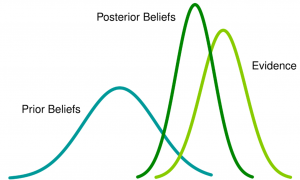
Have you ever wondered how machines can make decisions with uncertainty? What if there was an approach in machine learning that not only learned from data but also quantified and managed uncertainty in a principled way? Enter the realm of Bayesian machine learning. Bayesian machine learning is one of the most powerful modeling technique in predictive analytics. It marries the probabilistic reasoning with machine learning algorithms. Bayes’ theorem, which was first introduced by Reverend Thomas Bayes in 1763, provides a way to infer probabilities from observations. Bayesian machine learning has become increasingly popular because it can be used for real-world applications such as spam filtering (NLP), credit card fraud detection, …
Azure Machine Learning Studio: Getting Started
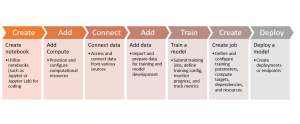
Azure Machine Learning Studio is a powerful cloud-based platform that brings the world of machine learning to your fingertips. Whether you’re a data scientist, a developer, or a business professional, Azure Machine Learning Studio provides a user-friendly and collaborative environment to build, train, and deploy machine learning models with ease. This blog post serves as a quick tutorial to help you get started with Azure Machine Learning Studio. From setting up your workspace to exploring key features and best practices, we will walk you through the essential steps to embark on your machine learning journey. Azure ML Studio – Machine Learning Pipeline Before we can proceed with the tasks in …
Machine Learning NPTEL Online Courses List 2023
Machine learning is a rapidly evolving field that has gained immense popularity in recent years. As technology continues to advance, the demand for professionals with expertise in machine learning continues to soar. If you’re someone who is interested in diving deep into the world of machine learning or looking to enhance your existing knowledge, the NPTel courses are an excellent avenue to explore. The National Programme on Technology Enhanced Learning (NPTel) is a joint initiative by the Indian Institutes of Technology (IITs) and the Indian Institute of Science (IISc). It offers a wide range of online courses across various disciplines, including computer science and engineering. In this blog, we will …
How to Access GPT-4 using OpenAI Playground?
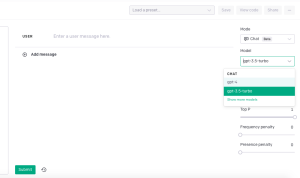
How good it would be if we could access GPT-4 using the OpenAI Playground and harness the groundbreaking advancements OpenAI has made in generating human-like text? OpenAI has revolutionized the field of natural language processing (NLP) with its large language models (such as different versions of GPT-3.5), and the release of GPT-4 has further pushed the boundaries of what’s achievable. In this blog post, we will guide you through a step-by-step process to access GPT-4 model using the OpenAI playground. Step 1: Visit the OpenAI Playground To get started, open your web browser and navigate to the OpenAI Playground website. The URL for the OpenAI Playground is https://playground.openai.com/. Step 2: …
Online US Degree Courses & Programs in AI / Machine Learning
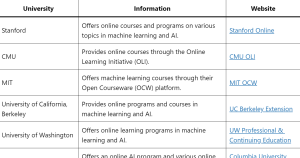
Data Science & AI / Machine learning has emerged as a transformative field, revolutionizing industries and shaping the future of technology. As the demand for professionals skilled in machine learning continues to rise, top universities in the United States (USA) have recognized the need to offer online degree courses and programs in this dynamic field. Through these online offerings, students can now access world-class education and earn prestigious degrees from the comfort of their own homes, while benefiting from the expertise of renowned faculty members. In this blog post, we present a curated list of leading US universities that provide online degree courses and programs in machine learning. Whether you …
Azure OpenAI Service Details & Pricing Info
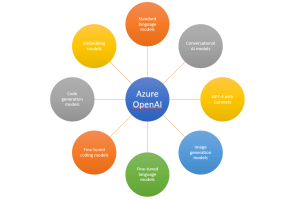
Azure OpenAI, an offering from Microsoft Azure, empowers developers, researchers, and enterprises with the transformative capabilities of Artificial Intelligence (AI). In this blog post, we explore Azure OpenAI’s service details and pricing information, providing you with insights to harness the immense power of AI. Azure OpenAI Services Information Azure OpenAI service provides a range of large language models from standard machine learning models to fine-tuned ones for specific tasks. We can build intelligent chatbots, automate code generation, or enhance natural language understanding. We can leverage conversational AI models for interactive virtual assistants that elevate user experiences and streamline operations. Image generation models can be used to produce stunning, realistic visuals. …
Binomial Distribution Explained with Examples
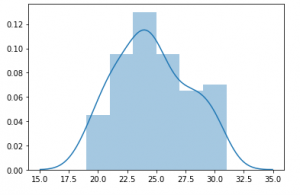
Have you ever wondered how to predict the number of successes in a series of independent trials? Or perhaps you’ve been curious about the probability of achieving a specific outcome in a sequence of yes-or-no questions. If so, we are essentially talking about the binomial distribution. It’s important for data scientists to understand this concept as binomials are used often in business applications. The binomial distribution is a discrete probability distribution that applies to binomial experiments (experiments with binary outcomes). It’s the number of successes in a specific number of trials. Sighting a simple yet real-life example, the binomial distribution may be imagined as the probability distribution of a number …
Online Data Science Courses at JHU 2023
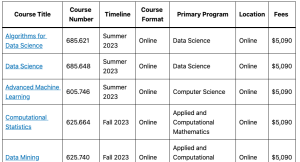
Are you interested in pursuing a Data Science course from the comfort of your own home? Look no further than Johns Hopkins University (JHU), offering a comprehensive range of Online Data Science Courses for the year 2023. Whether you are a working professional seeking to enhance your skills or a student looking to delve into the exciting world of data science, JHU’s online programs provide the flexibility and quality education you need. In this blog, we will explore the diverse array of online courses available at JHU, designed to cater to remote learners who want to excel in the field of Data Science. Discover the cutting-edge curriculum, esteemed faculty, and …
Model Cards Example Machine Learning
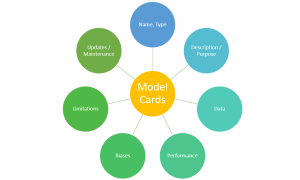
Have you ever wondered how to make your machine learning models more transparent, understandable, and accountable? Are you looking to implement responsible AI practices including ways and means to review and improve your existing model documentation? If so, you will learn about the concept of model cards, a powerful tool for documenting important details about machine learning models. You will learn the concepts with concrete examples and best practices that can serve as a guide for implementing or improving model cards in your organizations. The model card example can be seen as an standard template for model card which gets used in various different companies such as Google. What are …
Difference between Data Science & Data Analytics

What’s the difference between data science and data analytics? Many people use these terms interchangeably, but there is a big distinction between the two fields. Data science is more focused on understanding and deriving insights from data while leveraging statistical and machine learning methods, while data analytics is an overarching term used to solve problems using analytical techniques while leveraging data. Both the terms are in a way related. In this blog post, we’ll explore the differences between data science and data analytics in greater detail, with examples of each. The following are key topics in relation to the difference between data science and data analytics: Different forms/purposes Different techniques …
I found it very helpful. However the differences are not too understandable for me